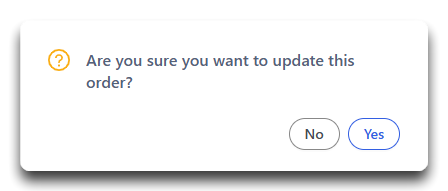How do I fulfill an outbound 3PL order in DigitBridge?
Here is a guide for 3PL Providers on fulfilling outbound sales orders from order confirmation to shipment and invoice creation.
Note: This guide is for 3PL providers (as opposed to operators who use a 3PL solution).
📦 What is an Outbound Order?
An outbound order is a sales order being shipped from a 3PL Provider’s warehouse on behalf of a client. Fulfillment involves confirming inventory, picking, packing, and shipping the order—and then generating the appropriate documentation.
🚚 Who Uses This?
This guide is for 3PL Providers using DigitBridge to fulfill outbound orders for their clients. These may originate from manual entry, channel sync (e.g. Shopify, Amazon), or the 3PL Client Portal.
✅ Fulfillment Workflow Overview
Note: This guide assumes all setup (SKUs, warehouse, customer linkages, pricing) is already complete.
1. Review Incoming Sales Orders
-
Navigate to Sales → Sales Order Management.
-
Use filters to locate the order.
-
Confirm inventory availability at the assigned warehouse.
-
If the warehouse is not assigned, fulfillment may be blocked.
-
2. Kick off Fulfillment
-
If not already generated, go to the Sales Order and - in Edit mode - change the status to Ready to Ship and click Save.

- Click Yes.

-
A pick ticket will be created and linked to the appropriate warehouse.
-
This pick ticket is automatically pushed to WMS for processing.
3. Fulfill the Order in WMS
-
Navigate to WMS and fulfill the order as usual.
-
Pick, pack, and scan items as needed.
-
Mark the order as Shipped.
4. Shipment Record is Created in ERP
-
After the WMS confirms shipment, a shipment record is auto-generated in ERP.
-
Includes tracking number, shipping cost, warehouse, and SKUs
-
5. Invoice is Automatically Created
-
Shipment triggers invoice generation to the end customer. See this guide for more on email notifications and document sending from DigitBridge.
-
If applicable, 3PL charges (e.g. outbound handling) are also recorded in the 3PL system for billing to your client.
📌 Notes & Options
-
If your client is integrated via EDI, a corresponding ASN and consolidated invoice can be triggered.
-
If inventory is split between warehouse and dropship, this process only applies to the in-house portion.
![white-logo-db.png]](https://support.digitbridge.com/hs-fs/hubfs/white-logo-db.png?height=50&name=white-logo-db.png)